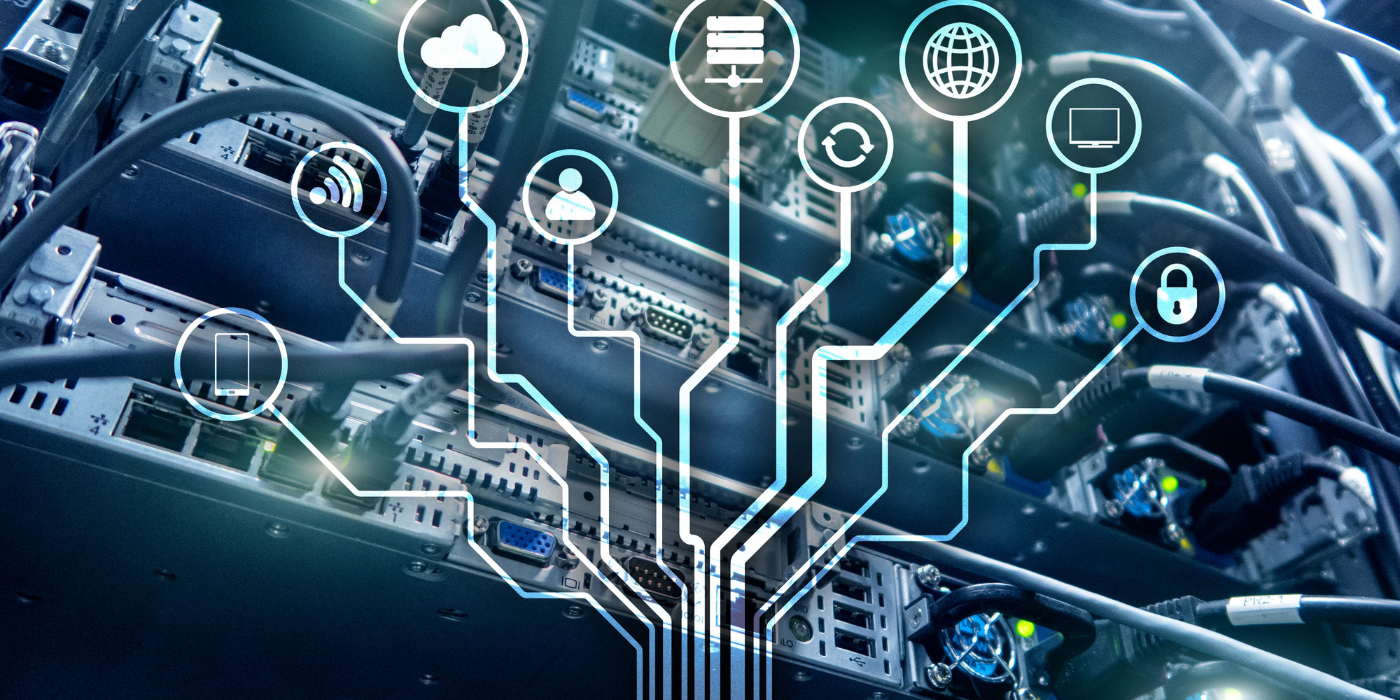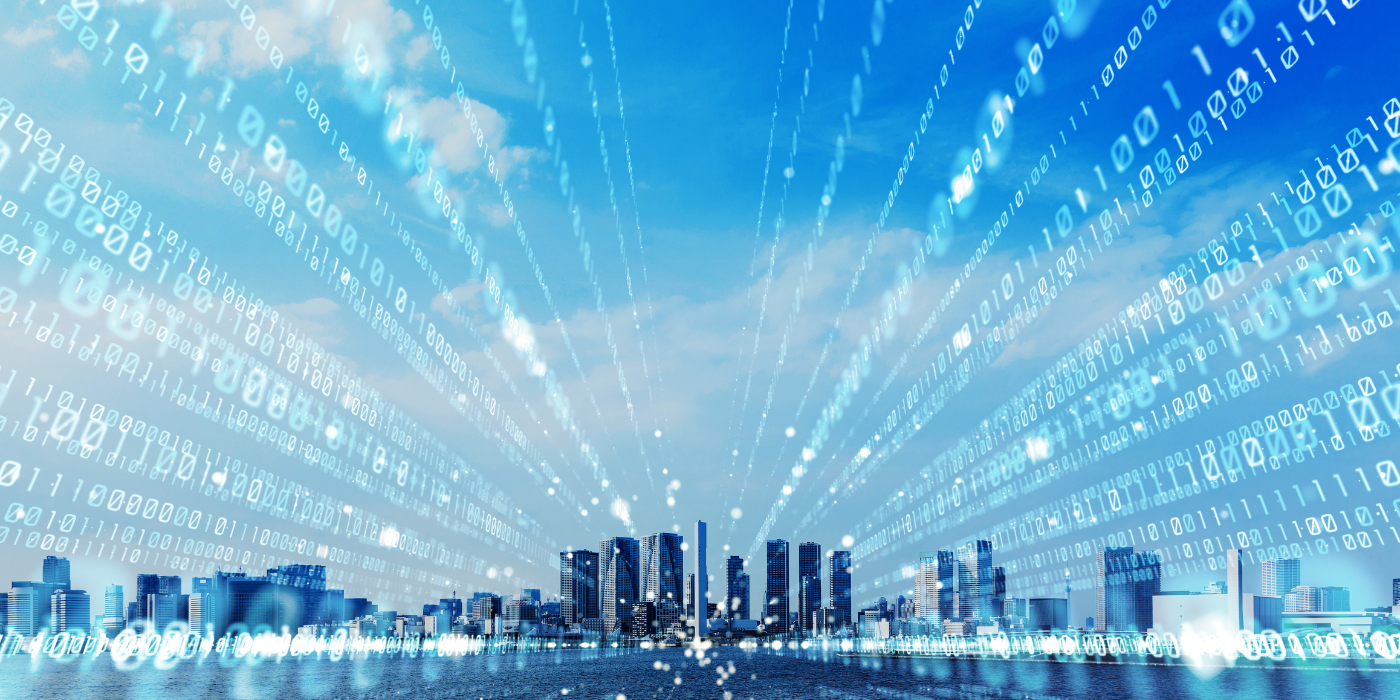IoT is Vital for Water Utilities Struggling to Meet Demand
The abundant supply of fresh, drinking-grade water is threatened around the world. IoT-driven smart water solutions could help optimize scarce supplies. But they will have to be standardized to be viable, as one of the biggest water utilities in Australia is currently pioneering.
Although 70 percent of the Earth’s surface is covered in water, only about three percent is freshwater suitable for human consumption. The rest is sea water. And of that three percent freshwater, most of it is frozen in inaccessible glaciers, snow and ice caps with less than one percent available for human consumption and use, including feeding crops and animals. But the biggest challenge of all is that the total amount of freshwater on the planet doesn’t change. It was the same a thousand, a million, a billion years ago. And de-salination methods are currently not even close to being commercially viable at global population scales. There is going to be no new or extra freshwater.
Yet on the demand side, global freshwater demand is rising alarmingly fast, driven by population growth, economic development and, above all else, climate change. And it is the latter that means water scarcity and sustainability is becoming a truly global problem, even in developed economies. Indeed, the United Nations predicts a global shortfall in freshwater by as soon as 2030. To put it bluntly: the world will have to manage its freshwater supply dramatically more efficiently and carefully than it has ever done in the past or it will start to run out.
Given that 70 percent of the world’s freshwater is used for agriculture, this could trigger famine and water wars in dryland parts of the world already suffering from the desertification, land degradation and drought caused by climate change. The good news is that IoT could play a major role in addressing the problem. This article will examine why, and potentially how, using as a pioneering partnering between smart utility meter specialist, EDMI, IoT device management and security specialist, IoTerop, and EDMI’s customer and of one of Australia’s largest water utilities, South East Water (SEW). This has resulted in a remarkably simple water meter solution that leverages the world’s existing cellular infrastructure using an IoT-targeted version of cellular wireless tech called “cellular IoT.”
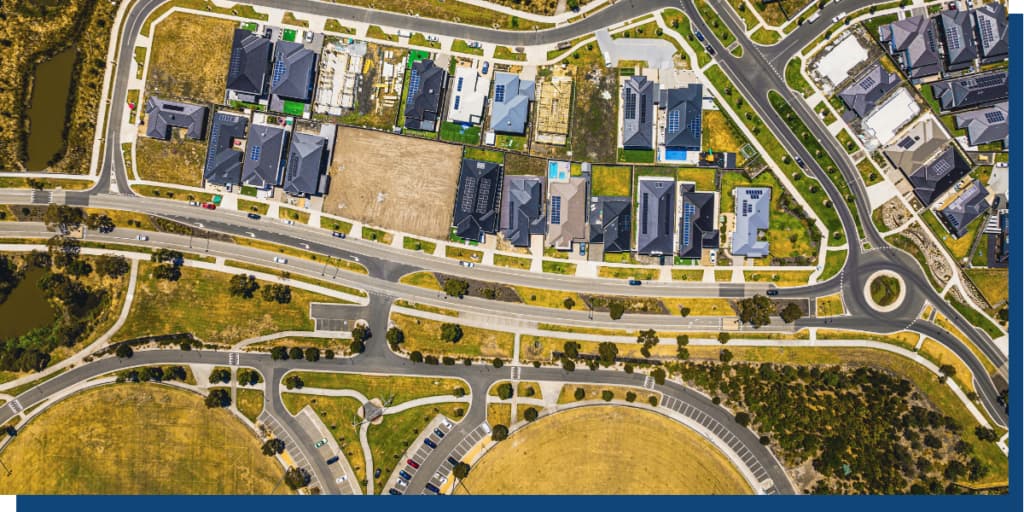
An aerial view of a South East Water customer region
Why smart is more
The most powerful tool in helping to reduce global water consumption and cost on the consumer side is through the widescale rollout of smart meters. “Consumers won’t accept ever increasing water bills regardless of how much they are told that water is becoming far more scarce and thus expensive to supply,” says David Roe, Account Director at EDMI. “They will blame the water utility for not doing enough to protect them. And so could governments too.”
Roe’s predictions mean water utilities need to get smart – fast. On the consumer side, this means giving all their customers the ability to accurately monitor and control their consumption. The only way this can be done is by installing smart water meters throughout the water distribution network. “Without smart meters, consumers and water utilities won’t stand a chance of optimizing consumption,” continues Roe. “And for me, that means smart water meters have to go from a "nice have one day" to a "must have today." You cannot expect consumers to play their part in conserving water if you don’t give them the right tools to do it.”
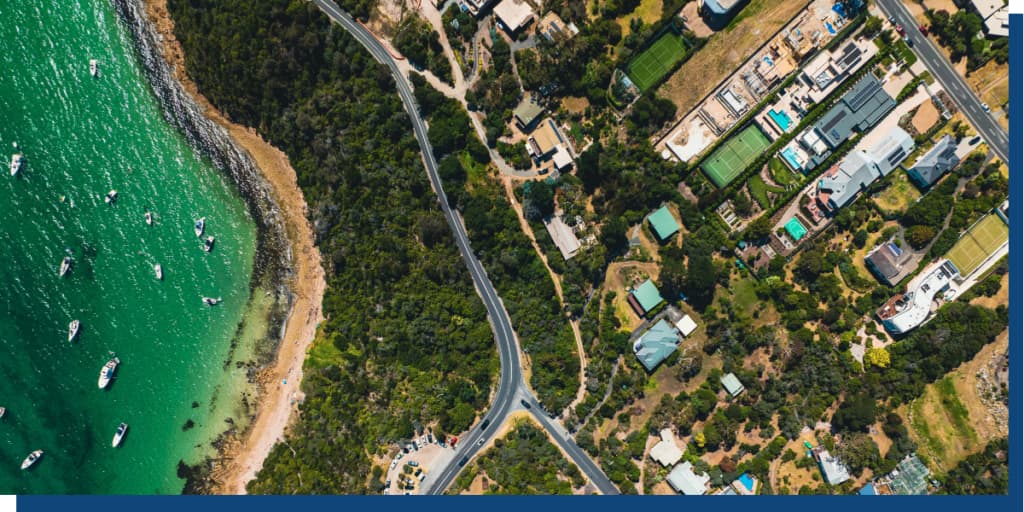
An aerial view of a South East Water customer region
Why smarter has been harder
In stark contrast to the electricity industry, global adoption of smart meters by water utilities has been extremely poor. Yet it is not the water utilities that are at fault. One of the prime reasons is an almost complete lack of standardization in terms of how water meters can be made smart and how to digitize both water distribution networks and back-end water utility infrastructure. Early efforts to do so by other pioneering water utilities have been decidedly ad hoc. This has resulted in a mishmash of low-tech wired and more high-tech wireless implementations, with some elements proprietary and some more standardized. But on a national (and even international) scale, none were ever designed to work seamlessly together and thus come anywhere close to supporting the required economies of scale.
This has kept both costs and technological barriers to entry inaccessibly high for most water utilities. And it has meant that only the most far-sighted, leading-edge companies were willing to go through the pain required to start transitioning to smart. But recent technology developments and innovations could transform this situation, as one particularly pioneering Australian water utility is demonstrating.
Smart water meters: An Australian case study
“When it comes to smart utility metering and network digitization, water has fallen behind other utilities in Australia,“ comments Andrew Forster-Knight, General Manager of Digital Utility at Melbourne-based, SEW. SEW is a customer of EDMI. “That’s a big problem because Australia is likely to face a major water scarcity challenge in the near future and we are starting to exhaust all the things we could reasonably expect consumers to do to conserve water – a prime example being to replace old fashioned shower heads with more efficient modern alternatives. But the bottom-line is that consumers need to become much more aware of how much water they are consuming, and this cannot be done without digital water meters.”
Forster-Knight says it’s increasingly important that water utilities deliver this awareness beyond just a simple meter reading. He says the water utility industry would be better served by comparing itself to mobile phone companies or other contemporary service providers that customers are familiar with. A prime example is mobile data consumption where users are notified by a “just-in-time” text message if they’re nearing their monthly data plan allowance so they can avoid incurring extra charges. Digital water meters need to provide similar meaningful data in a timely manner to customers.
This capability would not only feel completely familiar to consumers, but it would also support brand new billing models like pre-paid payment plans for customers that find it difficult to manage household costs. And it would even help to transform early leak detection for which the primary indicator is a sudden increase in consumption. If such leaks are on the consumer’s property, they are liable to pay for the extra usage, which does nothing to help build positive customer relations. “Real-time notifications would support so much new potential, including even allowing us to ‘gamify’ the supply of water,” adds Forster-Knight. “We could, for example, highlight to a consumer that compared to other residents in their neighborhood, they seem to be using a lot more water. It’s a much more gentle but effective nudge to encourage more careful management, especially amongst users who are sensitive to cost.”
Optimizing the other side of the water equation
Forster-Knight is keen to stress that digitizing a water network doesn’t just mean installing a bunch of smart meters. The cost savings must stack up for both consumers and supplier. SEW is responsible for over 25,000 km of sewer and water pipes that, beyond pumps and water stations, until very recently, were almost completely unmonitored and relied on reports from well-meaning members of the public to detect faults.
“That means we only ever find out about a problem long after the fact and often this can result in expensive repairs,” Forster-Knight continues. “So, the opportunity to embed IoT sensors throughout our network will enable us to make visible what was previously invisible and dramatically improve our ability to detect and react to key asset failures. And this intelligence could yield millions of dollars in cost savings that we can use to help lower costs for our consumers.” SEW is an Australian state government utility supplier in Melbourne and therefore faces no competitive pressure to modernize its network. But by taking the initiative, the organization expects to be able to deliver costs savings for its consumers and prevent the loss of millions of litres of valuable drinking water.
Digitizing an essential service
Although SEW was sold on the benefits of digitizing its water network, it now had to go through the process of installation. And that boiled down to three key parts: smart meter, wireless long-range network to communicate with that meter, and all the IoT software networking and security required to manage 100,000 smart water meters by the end of 2023, and one million over the next six years. “We have meters on our network using the same legacy technology that has been used for over 50 years,” says Forster-Knight. “Any replacement meters must deliver similar extreme reliability and longevity. The installed meters are expected to last at least 10 to 15 years before requiring replacement.”
Collaborative by nature, SEW turned to its industry partners for help. In response EDMI developed an industry-leading smart meter design that featured no moving parts and instead used ultrasonics to monitor water flow. To offset the cost of upgrading its entire network of water meters to smart water meters, SEW also needed to ensure the upgrade could be made as quick and easy for installers as possible. EDMI again responded to this request by saying that it could simplify installation to make the meters ‘plug & play’ if access to a ubiquitous wireless network was assured.
To initiate the digitizing process, SEW needed to select a long-range wireless IoT network to enable communication with all its meters in the field. “Installing a hard-wired connection was a complete non-starter economically and practically, especially within a geography the size of our service area,” Forster-Knight says. “What we needed was a wireless low power, wide area network (LPWAN) that we could have faith in being around for at least as long as our new digital meters. “The challenge here was that while there were several established wireless IoT LPWANs, most of these seemed to have very limited ecosystems or were overly reliant on a small [even down to one] set of suppliers. This gave us serious concerns that the LPWAN wouldn’t be around as long as our smart digital water meters, causing us major and expensive problems down the line.”
For SEW, the solution proved to be the NB-IoT flavor of the latest cellular IoT LPWAN technology. The technology utilizes existing global cellular infrastructure and brought with it the scalability, security, and longevity that implied. “NB-IoT gave us 95 percent population coverage in Australia using cellphone base stations,” says Forster-Knight. “I’m sure it will still be around 30 years from now, given it forms part of the 5G network.” SEW’s final problem was how to package all of this up together so that it could manage a network of smart water meter devices remotely without having to become an expert telco operator in addition to its purpose as a water utility.
LwM2M to the rescue
“You’ve got the digital water meter and you’ve got the wireless network with which to communicate with it,” says Forster-Knight. “Now how do you package up all that data safely and manage all those Internet-connected, unique IP-addressed water meters securely?” SEW’s challenge was the same as that faced by other utilities that were busy building NB-IoT networks: how to manage “massive IoT.” Each new smart meter must be commissioned, configured, and occasionally updated with essential firmware and security updates over the air. And that’s not including regularly gathering usage data. Multiply that requirement across millions of smart meters and it’s not hard to understand this is a major issue.
Interoperability between IoT devices is one of the biggest challenges for massive IoT management. But one pioneering interoperable standard for IoT device management is helping address the problem. Called Lightweight M2M (LwM2M), the protocol significantly reduces both the power consumption and data usage needed for IoT device management, while supporting the scalability and security demanded by large IoT deployments. SEW’s engineers and management considered LwM2M so significant that in 2019 the company joined the Open Mobile Alliance (OMA), the custodian of the LwM2M standard, and became involved in creating the specification for the device management protocol. As part of this involvement the company defined 30 LwM2M “objects” (specific functionalities provided by the LwM2M client) related to its business operations.
EDMI was one of the earliest smart meter supply firms to embrace NB-IoT cellular IoT and LwM2M for device management. As a result, the company is a leader in commercial smart water meters and other smart utility meters of this type. EDMI based its LwM2M solution on IOWA, a highly compact implementation of the protocol from IoTerop, an IoT development tools and device management software company.
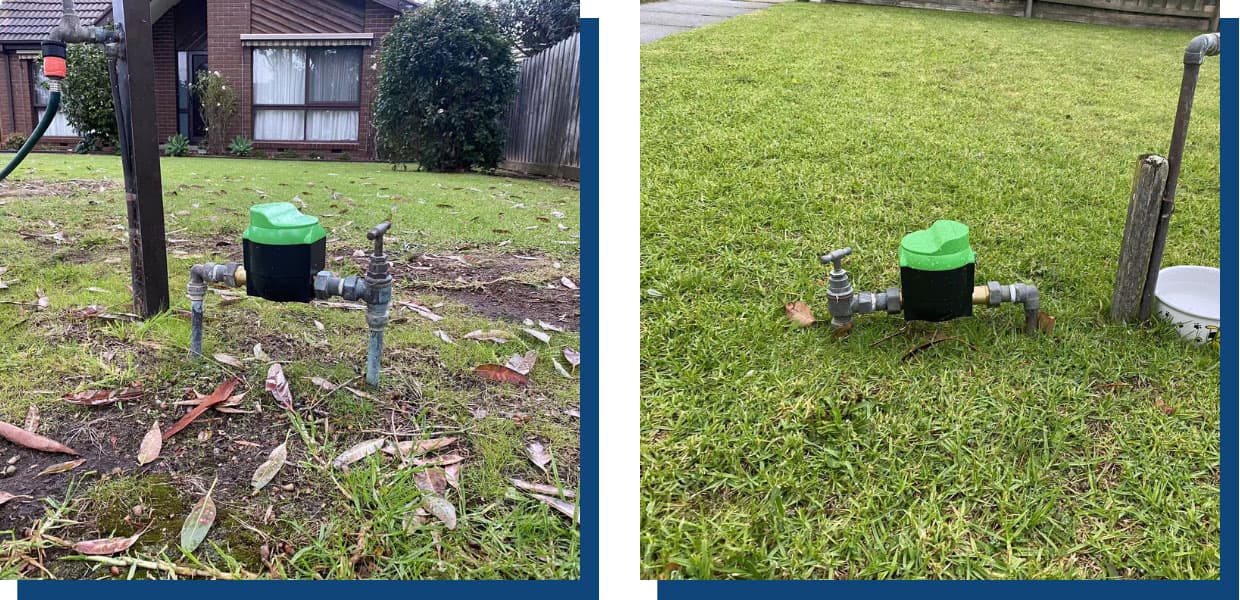
EDMI’s ultrasonic DN20 smart water meters installed at a house of a South East Water customer
IoTerop’s commercial offering helps developers get started with LwM2M by providing a compact but powerful software development kit (SDK). Once the IOWA firmware is installed in commercial products, it not only brings standardized device management services, but also reduces device costs, lowers energy consumption, and enhances network utilization. Closing the collaborative loop, IoTerop also has a direct relationship with SEW through OMA. Like SEW, IoTerop is also a LwM2M pioneer, joining OMA in 2019 and playing a key role in the creation of the LwM2M standard. “The solution is optimized so it can run on a typical digital meter control processor with ease,” explains SEW’s Forster-Knight. “That made it simple to both manage and take data from any number of meters, and to feed all that data into a cloud based IoT platform.”
Disrupt or be disrupted
By working with EDMI and IoTerop, SEW has future-proofed its digital water meter rollout by effectively building an expandable IoT platform upon which other smart sensors and capabilities can easily be added over time. “This is vitally important,” concludes Forster-Knight. “Because in its current state the global water utility industry is ripe for disruption. My advice to any water utility company reading this right now is that unless we as an industry undergo a digital transformation, we leave ourselves open to being forced to do it or see somebody come along and do it instead. That may not be the best solution for our customers, because at the end of the day we are the experts when it comes to water. Digital meters and IoT give water utilities an opportunity to ensure they can deliver water to their consumers at a price the users can afford and in an optimized way that can ride out the inevitable volatility in supply that is heading our way. Now is the time to act.”
